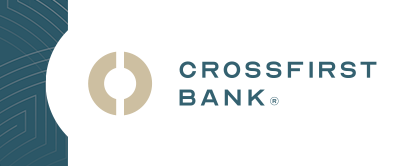
By Dr. Christopher Kuehl and Mr. Keith Prather of Armada Corporate Intelligence
Published December 21, 2023
As we approach the new year, there are four key economic areas that we see ahead.
- Interest Rate Policy – The Federal Reserve has been focused on “higher for longer” through the majority of the last several months and that may be their position through at least the first half of 2024. It is true that inflation has dipped (more about that in the next paragraph) but it is still well above the ideal level set by the Fed (the Fed’s target rate). The central bank position has been to raise rates until they slow down economic growth in order to cool inflation. Then they lower rates to rekindle growth. Their prime signal is unemployment. When that rate goes up, the assertion is that the economy has slowed enough. Right now, the U-6 rate (one of the broadest measures of unemployment) is as low as it has been in years. The Bureau of Labor Statistics releases six cuts of their data. U-6 includes discouraged, underemployed, and unemployed workers, making it the most complete. It was sitting at 7.0% in the November labor report versus the long-term average of 10.1% (it hit an all-time low of 6.5% in December of 2022). As long as that rate remains this low, the Fed will have room to maneuver. Beyond that, the economy grew at 5.2% in the third quarter according to the Bureau of Economic Analysis which was better than expected. These are not numbers that suggest imminent recession, and therefore the Fed is not feeling intense pressure to cut rates. It seems likely that rates will start to decline slowly by the middle of next year, and there could be as many as three or four quarter-point cuts by the end of 2024.
- Inflation – There are some interesting theoretical conversations taking place that could affect the reaction of the Fed to inflation. The long-term assumption has been that the “neutral” Fed Funds rate is 1.0%, prompting the Fed to set its inflation target at 2.0%. There is mounting evidence suggesting the neutral rate might be 2.0% or even as high as 2.5%. The neutral rate means that anything over that rate slows and anything under that level stimulates the economy. If the neutral rate is higher than assumed, the Fed could shift its inflation goal to 3.0%. Right now, the inflation rate as measured by Personal Consumption Expenditures is slightly over 2.5% (at the six-month level as of October). It is close to 3.0% on an annual basis and core rates rose a little in the last month. The current primary drivers of inflation are housing and wages. Both will be factors next year as well. The factors that have lowered inflation threats have been energy and food. Neither of these are included in figuring core inflation rates because of their intense volatility. Inflation will keep falling next year but any shift in energy or food could quickly drive prices back up.
- Threat of Recession – Generally, economists have been predicting recession for the last five quarters, but it hasn’t happened yet. In Q3 of this year, the assumption was a decline in Real GDP of over 1.0%. Instead, we saw growth of 5.2%. Many economists are now predicting a shallow recession in the first half of 2024 (contraction of 1.0% in Q1 and 0.7% contraction in Q2). The more optimistic assessment is growth around 2.0% (close to the twenty-year average of 2.5%). The factors that have kept us out of a downturn thus far have been strong consumer spending, rapidly growing nonresidential construction, government spending, and strong inventory building activity in Q3. If the consumer starts to falter under the weight of $1.03 trillion in credit card debt (at record high interest rates) and $17.29 trillion in overall debt, according to the New York Federal Reserve, their contribution to GDP through spending could falter fast. If business stops inventory accumulation, the economy also starts to retreat. At the moment there is not a lot pointing to an imminent recession as corporate investment remains robust, nonresidential construction is stable, government spending is still accelerating, and other growth indicators are positive.
- Unemployment and Worker Shortages – Jobless numbers are historically low and there have been job gains every month despite predictions of decline. The U-6 rate is as low as it has been in years and the U-3 rate (the most commonly reported unemployment rate) is still well under 4.0% (there was a time when 6.0% was considered low). Job openings were 8.7 million in October against a ‘balanced’ average of 6 million over the past thirty years. The very low rates of available workers have been propelling wage inflation. Worker shortages will continue to dominate next year - and possibly for many years to come. The quit rate is as high as it has been in years. There have been some high-profile layoffs, but in general the job market remains extremely tight.
For 2024, there are many hints that mild economic slowing may lead to a mild recession, short in duration, in the first half of the year. The US consumer remains resilient despite some strong headwinds and cooling inflationary conditions. This will help spur spending on non-essential items and help households dig out of non-housing related consumer debt, improving optimism as a result. The key to this growth will continue to be corporate hiring, corporate investment, and spending. With consumer spending accounting for 70% of US GDP, a healthy consumer is critical in the continuation of sustainable economic growth.
About the Authors
Dr. Christopher Kuehl and Keith Prather are founders and managing directors of Armada Corporate Intelligence. Dr. Kuehl holds a Ph.D in Political Economics and Master’s Degrees in Soviet Studies and East Asian Studies. He works with a wide variety of corporate clients around the world and is the economist for several national and international organizations. Mr. Prather has been providing corporations with market intelligence and analysis covering domestic and global economics, geopolitics, raw material and supply chain developments, environmental impacts and other factors that affect the corporate operating environment for more than 22 years.
Disclosure and Important Considerations
This communication is provided for informational purposes only. The opinions expressed herein are those of the author and do not necessarily represent the opinions of CrossFirst Bankshares Inc. or CrossFirst Bank. This communication references certain data and statistical information, which has been obtained from various independent, third party sources and publications. The information is believed to be reliable as of the date of this communication, but we have not independently verified the information and do not warrant its completeness or accuracy. CrossFirst Bankshares Inc. and CrossFirst Bank are not liable for any errors, omissions, or misstatements. You should not use this information as a substitute for your own judgment, and you should consult professional advisors before making any tax, legal, financial planning, or investment decisions. This communication contains no investment recommendations, and you should not interpret the statements in this report as investment, tax, legal, or financial planning advice. This is not an offer or solicitation for the purchase or sale of any financial instrument.
December 21, 2023 by CrossFirst Bank

